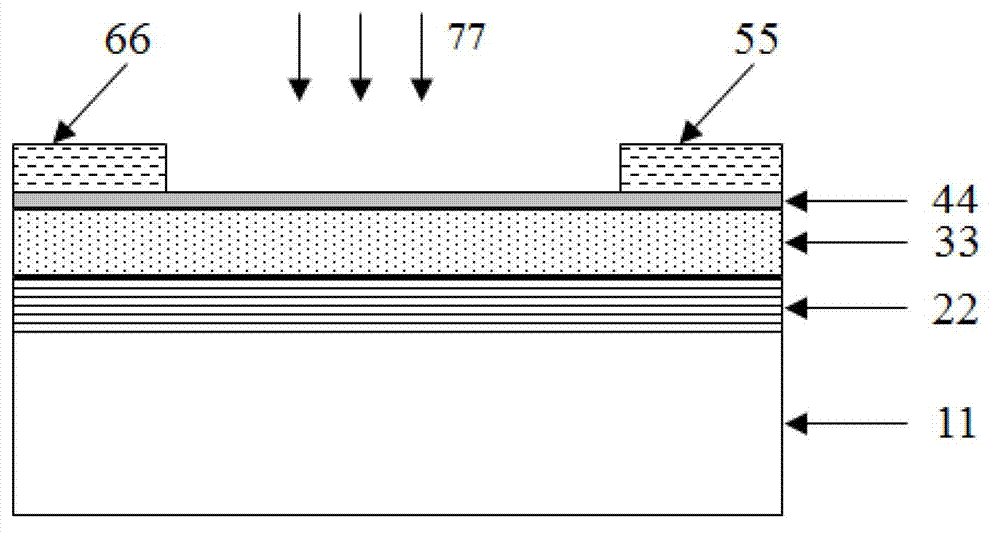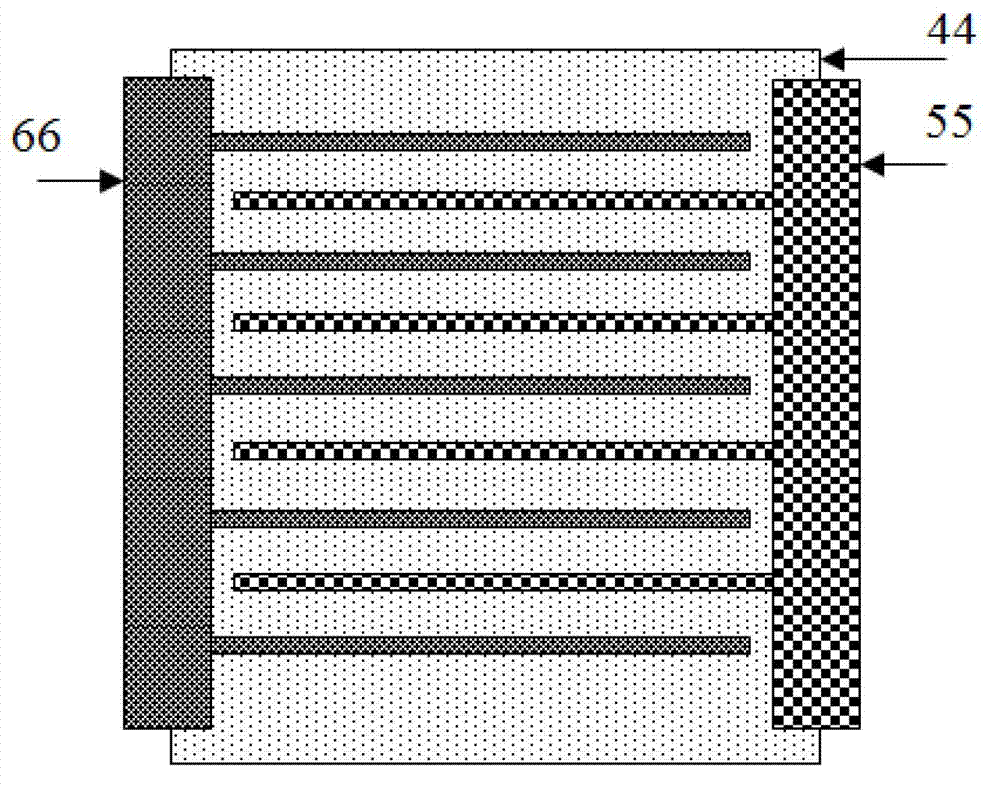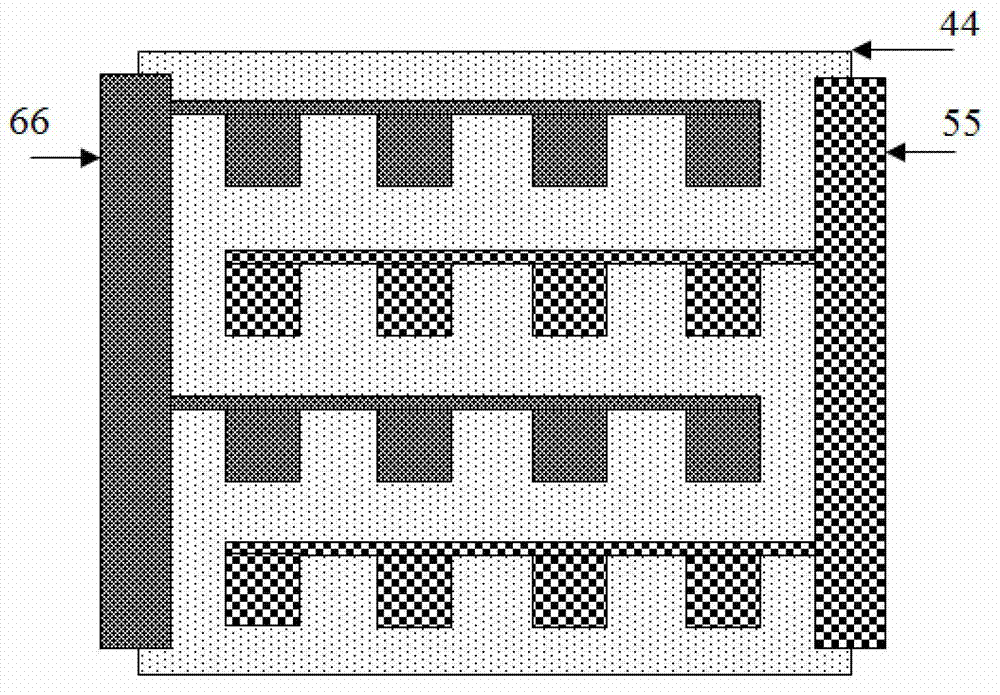Graphene transistor based on metamaterial structure, optical sensor based on metamaterial structure, and application of graphene transistor
A technology of metamaterials and transistors, applied in the field of photodetection devices
- Summary
- Abstract
- Description
- Claims
- Application Information
AI Technical Summary
Problems solved by technology
Method used
Image
Examples
Embodiment 1
[0051] Example 1: refer to figure 1 Shown is the longitudinal cross-sectional view of the graphene transistor photodetector based on the metamaterial structure of this embodiment, which includes a substrate 11, a gate metal layer 22, a gate dielectric layer 33, a graphene layer 44, a source 55 and a drain 66 metal layers, the incident light is shown by the arrow 77 in the figure. In this embodiment, the gate metal layer 22 constitutes the reflective layer of the metamaterial, and the metal layers of the source electrode 55 and the drain electrode 66 constitute the surface impedance matching layer of the metamaterial. By optimizing the design of the gate dielectric layer 33 and the source electrode 55 and the drain electrode 66 The periodic structure can get nearly complete absorption of the preset band. At the same time, the gate metal layer 22 can be used as the gate of the transistor to regulate the forbidden band of the graphene layer 44 and form a carrier conduction ch...
Embodiment 2
[0052] Example 2: The longitudinal sectional view of this embodiment can refer to figure 1 , top view diagram see image 3 , the main difference from Embodiment 1 is that in this embodiment, the source 55 and the drain 66 form a two-dimensional periodic structure, and the surface impedance matching layer of the metamaterial formed by it can form a Near-zero reflection, thereby further improving the photoelectric conversion efficiency of the detector.
Embodiment 3
[0053] Example 3: refer to Figure 4 Shown is the schematic diagram of the top view of the graphene transistor photodetector based on the metamaterial structure in this embodiment for imaging applications, wherein A, B, C, and D are respectively graphene transistor photodetectors working in different preset wavebands. It can be either of Embodiment 1 and Embodiment 2. By integrating A, B, C, and D detectors into one pixel I and periodically arranging them to form the entire image sensor, multi-band imaging can be obtained. For example, A and D are graphene transistor photodetectors in blue and red bands respectively, and B and C are graphene transistor photodetectors in green band, which constitute an RGB (red, green and blue) color image sensor. By optimizing various integration schemes of graphene transistor photodetectors in different bands, a multi-band combined super camera can be obtained.
PUM
| Property | Measurement | Unit |
|---|---|---|
| impedance | aaaaa | aaaaa |
Abstract
Description
Claims
Application Information
 Login to View More
Login to View More - R&D
- Intellectual Property
- Life Sciences
- Materials
- Tech Scout
- Unparalleled Data Quality
- Higher Quality Content
- 60% Fewer Hallucinations
Browse by: Latest US Patents, China's latest patents, Technical Efficacy Thesaurus, Application Domain, Technology Topic, Popular Technical Reports.
© 2025 PatSnap. All rights reserved.Legal|Privacy policy|Modern Slavery Act Transparency Statement|Sitemap|About US| Contact US: help@patsnap.com



